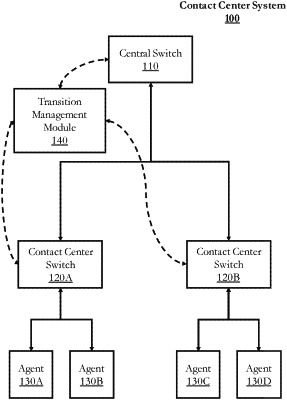| CPC H04M 3/5175 (2013.01) [G06Q 10/06 (2013.01); G06Q 10/06393 (2013.01); H04M 3/5191 (2013.01); H04M 3/5233 (2013.01); Y04S 10/50 (2013.01)] | 18 Claims |

|
1. A method for behavioral pairing in a contact center system comprising:
obtaining, by at least one computer processor communicatively coupled to and configured to operate in a contact center system, a plurality of agents;
obtaining, by the at least one computer processor, a first contact-agent pairing strategy for the contact center system for a first time period, wherein the first contact-agent pairing strategy comprises a parameter, wherein a value of the parameter affects a likelihood of selection for pairing of each agent of the plurality of agents, wherein a larger difference in bandwidth likelihood of selection between a higher-performing agent and a lower-performing agent corresponds to a larger bias toward skewed agent utilization;
pairing, by the at least one computer processor, during a first subset of time of the first time period, a first plurality of contact-agent pairings based on the first contact-agent pairing strategy, the plurality of agents, and a first value for the parameter;
determining, by the at least one computer processor, a second value for the parameter of the first contact-agent pairing strategy based on an amount of remaining time in the first time period after the first subset of time has elapsed; and
pairing, during a second subset of time of the first time period, contacts to agents of the plurality of agents based on the second value of the parameter, the first contact-agent pairing strategy, and a corresponding likelihood of selection of each agent of the plurality of agents.
|